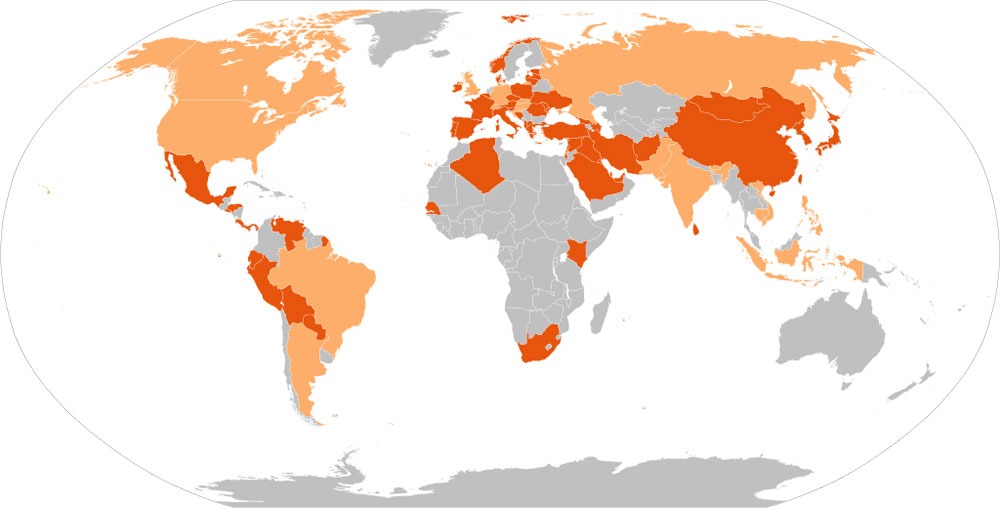
March 11, 2020; Scientific American and the New York Times
The fabric of our communities is woven from a skein of organizations—public and private, large and small, for-profit and nonprofit—that together we hope will maintain our collective social health. Even before COVID-19 entered the scene, many were already frayed and worn, stressed by growing need, funding limitations, and a political climate that stigmatized many of those they served. Now, they face a new test.
Success will depend on collective and collaborative responses. No organization works in a vacuum; what may be good for one organization could have a negative impact on the larger effort to respond to COVID-19 and keep people safe and healthy.
The state of Washington, an epicenter of the coronavirus outbreak in the US, has had little choice but to face this challenge head-on. The city of Seattle hosts the nation’s third-largest number of homeless people. Daniel Malone, executive director of the city’s Downtown Emergency Service Center, describes what that means in the face of COVID-19 for Scientific American: “Frankly, we struggle to meet their full array of needs as it is. The prospect of adding on another illness that may have more severe effects on people with underlying conditions is quite worrisome.”
Those who serve the homeless will find it hard to perform the practices public health experts are asking every organization to respect. Kira Newman, an infectious disease researcher at the University of Washington, describes what is needed:
Coronaviruses spread through droplet transmission…so sanitizing surfaces and maintaining a distance between people are key to containing it. These precautions are not always practical for homeless individuals, who often lack access to soap and hot water and stay in crowded shelters. They also have a high rate of poorly treated chronic illnesses, putting them at a greater risk of a severe COVID-19 infection. Once people without homes get sick, they may lack the proper care required to get better, including a comfortable place to rest, warm liquids and medications.
A similar reality faces those who run schools. Based on federal Centers for Disease Control and Prevention (CDC) guidance, at least 40 percent of the nation’s schools have decided to close for extended periods of time, which may stretch into months. Many more will follow if the spread of the virus continues. The ripples of these decisions will be felt beyond the walls of the closed schools, since beyond education, schools perform many functions in their community. According to Chalkbeat, “Over 30 million American children get meals from the National School Lunch Program.” Many families’ economic stability also depends on schools serving as a childcare provider.
Sign up for our free newsletters
Subscribe to NPQ's newsletters to have our top stories delivered directly to your inbox.
By signing up, you agree to our privacy policy and terms of use, and to receive messages from NPQ and our partners.
According to the CDC’s guidance, school officials must “remember to implement strategies to ensure the continuity of education (e.g., distance learning), as well as meal programs and other essential services for students.” School districts can make choices about what preventing the spread of infection requires of them and how they might continue to teach their students at a distance, but they cannot ignore the other critical impacts closure will have on students and their families.
Adding to the strain, unlike a natural disaster, which can leave schools damaged, or a teacher’s strike, the option isn’t there to turn to another community institution for temporary space to house a school’s activities. The need for increased social distancing and replacement for lost nutritional support and childcare when schools close will require a broader level of engagement to develop.
Not only do we need to be able to think about broad, collaborative responses, we will need to respond to continually changing conditions. Kevin Wickersham, the incident commander at Washington’s Department of Health, told the New York Times the US was in “the beginning phases of the outbreak. He “cautioned people to be prepared for long-term life changes” and said more interventions and restrictions may be on the way.
Ramping up services to address the virus in the context of an already-thin system may be the greatest challenge. Dr. Marcus Plescia, chief medical officer for the Association of State and Territorial Health Officials, was describing an overtaxed public health system, but his comments to the Times aptly describe the challenge of many organizations trying to keep communities intact and prevent harm of people in need.
The biggest problem off the top is there’s sort of like a surge capacity. This all-hands-on-deck metaphor, of people getting pulled off of all sorts of things to work on this, some of that’s okay. But the problem is you’re pulling across all of these programs, all of which have been cut and chopped away at over the last few years, so there’s not the same capacity as there once was.
—Martin Levine













